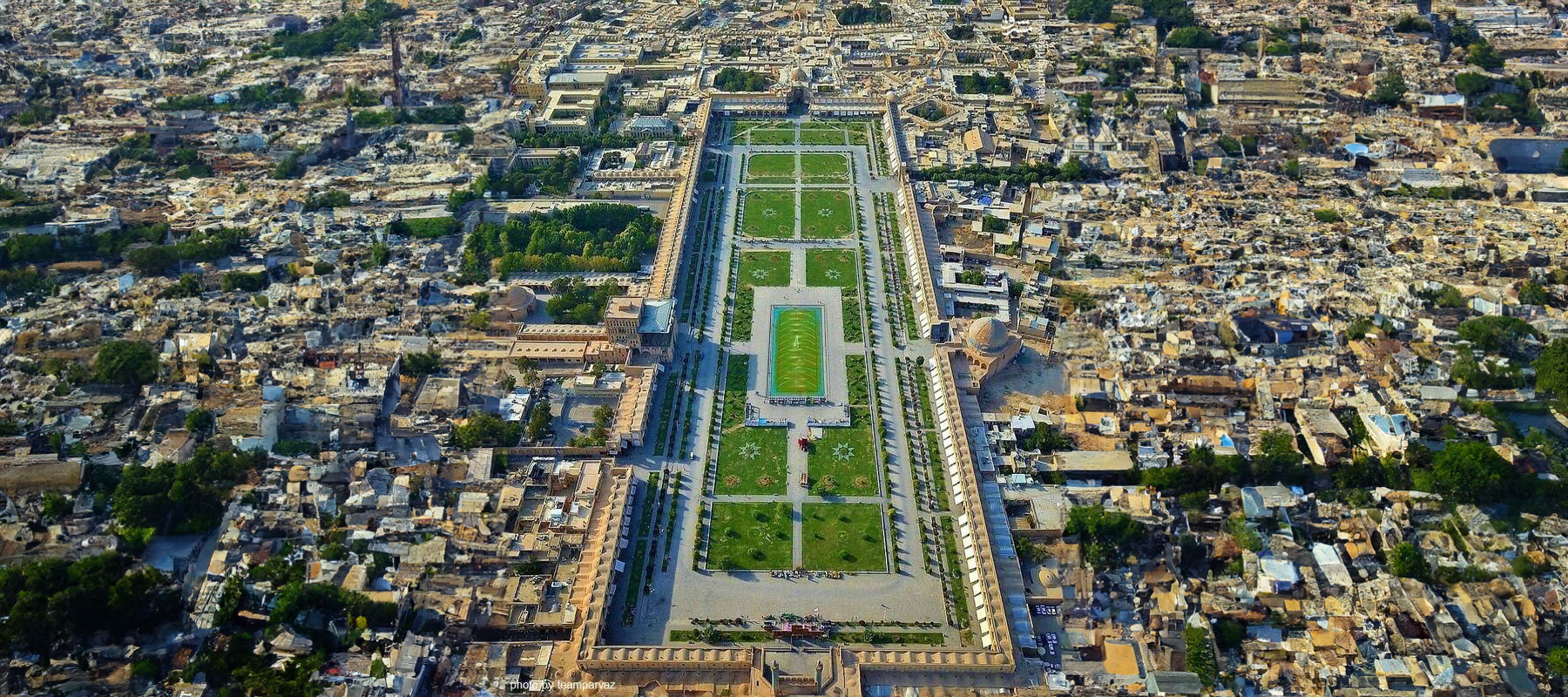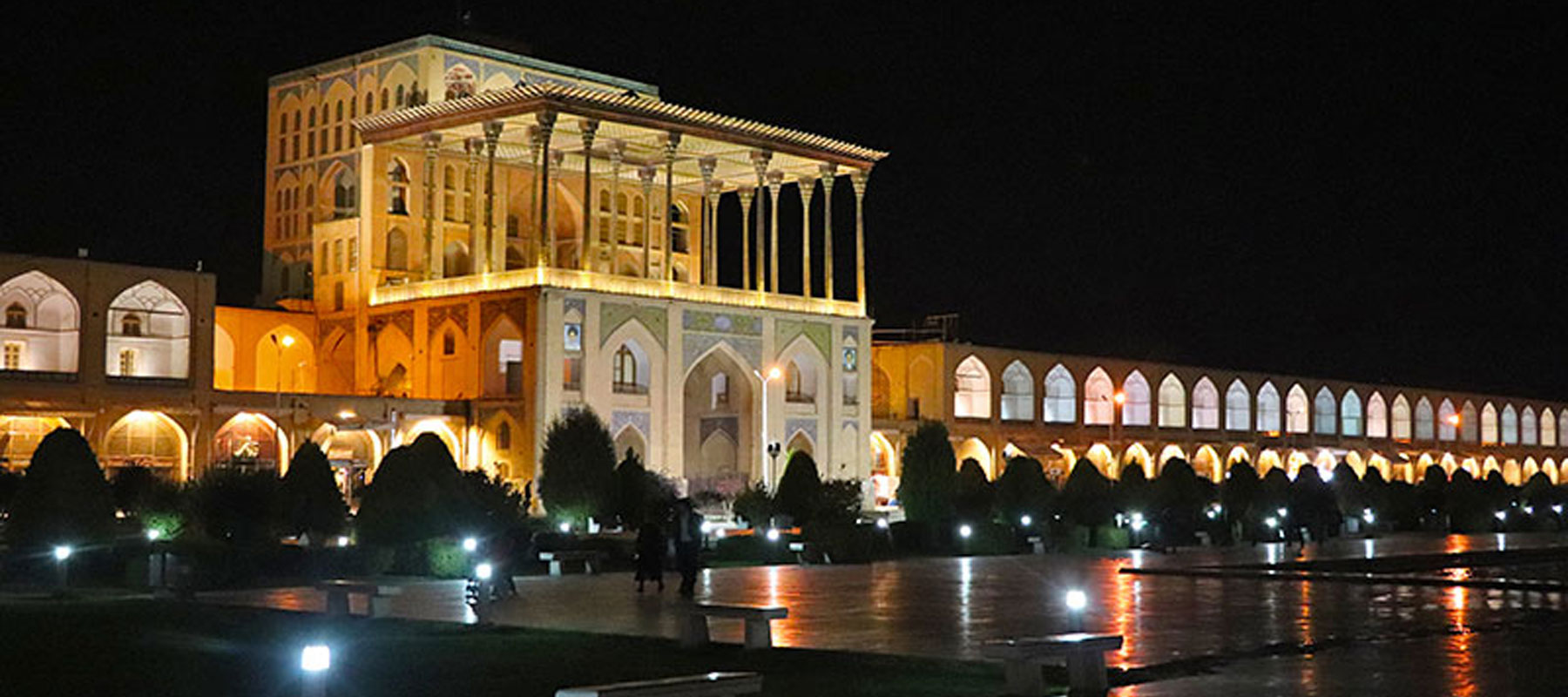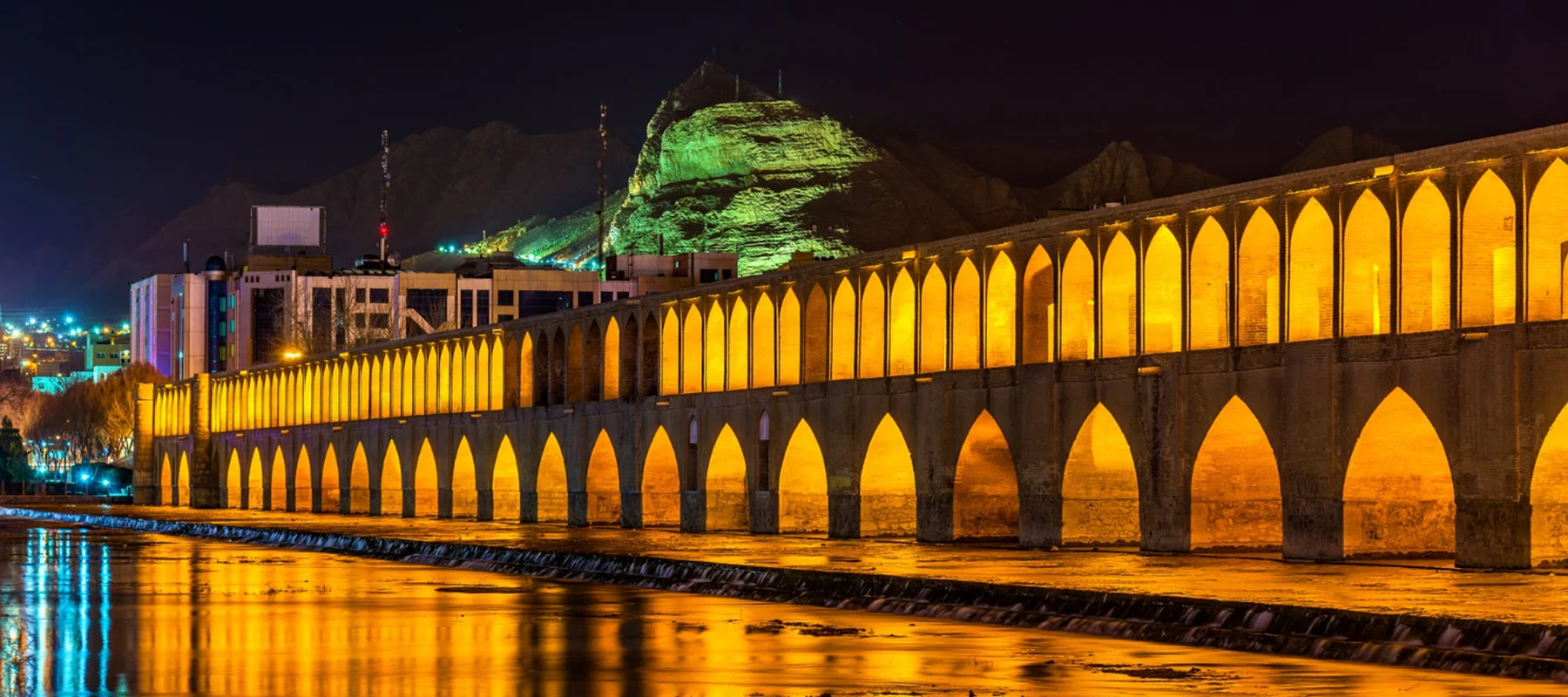
Naghsh-e-Jahan Square
Naghsh-e-Jahan Square, also known as Naqsh Jahan square or Imam Square, is the pulsating heart of Isfahan's cultural and historical tapestry. This central square not only hosts an array of ancient monuments but has also earned UNESCO's recognition, propelling it to international fame. Tourists from around the world flock to Isfahan, booking plane tickets year after year, eager to witness the magnificence that this square has to offer.
The square is a treasure trove of architectural wonders, with the Imam Mosque's intricate tilework, the elegance of Sheikh Lotfollah Mosque, and the grandeur of Ali Qapu Palace. These structures, standing as testaments to Isfahan's rich past, invite visitors to step into the footprints of history. The allure of Naghsh-e-Jahan Square lies not just in its architectural marvels but in its ability to transport travellers to a bygone era, leaving an indelible mark on all who stroll through its hallowed grounds.
.jpg)
A Historical Overview
Situated in the northern expanse of Isfahan City, Naqsh Jahan square stands as a testament to the enduring allure of history. Welcoming countless visitors each year, this square was historically referred to as Maidan Shah until 1979, when the victory of the Islamic Revolution bestowed upon it the esteemed title of Imam Square of Isfahan. However, its nomenclature has evolved throughout the ages, from Main Square to Big Square, Qasr Square, Royal Square, and New Square. This square's significance transcends time, marked by its inclusion in the roster of national monuments on January 28, 1935, and its subsequent inscription on the UNESCO World Heritage List in 1980.
Before the Safavid era, Naqsh Jahan square was graced by a picturesque garden that bore the same name. Interestingly, the moniker "Naqsh Jahan" once belonged to a city in Azerbaijan, now known as Nakhchivan. This expansive field spans over 560 meters in length and 160 meters in width, adorned by 200 two-story cells that tell stories of eras long past. The square's captivating aura is further enriched by a collection of splendid historical edifices that stand as sentinels to the past. Echoes of preservation resonate through time, as the arches that once encircled the square have metamorphosed into the intricate cells that grace its periphery today.
.jpg)
Exploring the Historical Tapestry of Naqsh-e-Jahan Square
The historical narrative of Naqsh-e-Jahan Square unfolds like a captivating tale of transitions. Originally embraced by a sprawling garden, its core was known as Kushk. Within its bounds stood military edifices from the Agh Quyunlu and Timurid eras, with echoes of Seljuk festivities having once enlivened its expanse.
With the ascent of Isfahan as Iran's capital in the Safavid era, Naqsh-e-Jahan Square blossomed into a hub of prosperity. This transformation was the result of visionary Shah Abbas Safavid's directive, brought to life by esteemed architects like Sheikh Bahai, Ustad Ali Akbar Isfahani, and Mohammad Reza Esfahani.
The square's foundational stone was laid in the 1011 lunar year, its completion by 1025 marked by the intricate adornment of structures like the mosque. Drawing inspiration from the venerable Atiq Square and sharing similarities with other renowned squares, Naqsh-e-Jahan stood as a testament to architectural brilliance.
Regrettably, its lustre dimmed over time, as streams receded and tumultuous events marred its grandeur. However, during the Pahlavi reign, a renaissance unfolded as the square underwent meticulous reconstruction, rejuvenating Isfahan's economic vitality.
.jpg)
Discover the Charms of Naqsh-e-Jahan Square's Sightseeing
Naqsh-e-Jahan Square is an expansive playground of history that beckons you to explore its wonders at your leisure. Each corner of this square holds a piece of its storied past, creating an enchanting atmosphere that captivates both day and night.
The square's architectural treasures have retained their timeless allure, standing as a testament to the ages gone by. The intricate cells surrounding the square serve as not only a bustling shopping hub but also as historical landmarks in their own right. These stalls offer a variety of Isfahan souvenirs, ranging from delectable treats to exquisite handicrafts, copper artefacts, and carpets. As you traverse this square, consider delving into the neighbouring Isfahan Grand Bazaar for a more immersive shopping experience. Additionally, a remarkable transformation is underway as an impressive Islamic museum takes shape on the square's upper floor. This cultural gem is set to offer profound insights into Islamic and Iranian heritage, solidifying Naqsh-e-Jahan as a centre for cultural exploration. Exploring Naqsh-e-Jahan Square is an opportunity to step into Isfahan's past while embracing its vibrant present.
Architectural Marvels Around Naqsh-e-Jahan Square
The Abbasi Jame Mosque, nestled on the south side of the square, stands as a cornerstone of history. This mosque, erected in 1020, has hosted centuries of traditional gatherings. Shah Abbas I's inscription and architectural tributes adorn its facade, showcasing the artistic prowess of its time. Nearby, the Sheikh Lotfollah Mosque boasts a dome of captivating beauty, perched on the square's eastern edge. Crafted by Shah Abbas I, this mosque remains a testament to exclusive Safavid-era artistry, with its 32-meter dome reflecting the brilliance of architect Mohammad Reza Esfahani.
To the west, the Ali Qapo Mansion once held significant government importance. Its six floors and unique decorations continue to enthral both domestic and foreign tourists. North of the square, the Sar Dar Qaisarieh once welcomed visitors to Isfahan's economic heart, while the Isfahan Bazaar, a grand embodiment of Safavid and Qajar architecture, thrives as one of Iran's largest and most exquisite markets. As life pulses through its alleys, the market not only echoes with history but also serves as a living testament to the city's vibrancy.
Entertainment at Naqsh-e-Jahan Square
Naqsh-e-Jahan Square stands as a multifaceted hub in Isfahan, encompassing economic, political, social, touristic, and recreational dimensions. Among its diverse entertainment offerings, the square serves as the backdrop for traditional celebrations and holidays. This historic location has witnessed royal sports like polo, with ancient stone polo fields that remain present to this day.
Visitors can enjoy delightful carriage rides, a charming way to explore the square's expanse. Graced with elegantly adorned gardens and vibrant flower arrangements, the square radiates beauty. The central turquoise pools, adorned with towering fountains, infuse the atmosphere with a serene and pleasant ambience. Alongside these features, numerous benches offer travellers and tourists the perfect spots to relax and soak in the surroundings.
.jpg)
Locating and Accessing Naqsh-e-Jahan Square
Naqsh-e-Jahan Square is situated in the northern part of Isfahan City, embracing a central role in the city's layout. It is interconnected by three principal axes:
1. The north-south axis links Imam Mosque to Qaiser Gate.
2. The east-west axis spans from Ali Qapu Mansion to Imam Mosque.
3. A secondary east-west axis extends from Chehl Seton Palace to the buildings adjacent to Zayandeh Rood.
To reach Naqsh-e-Jahan Square, Sepeh Street leads from the west, while Hafez Street lies to the east. Sepeh Street, perpendicular to the Zayandeh River, offers convenient access with ample parking facilities near its entrance. If arriving by private car, this provides a convenient parking option.
Parallel to the square, Standard Street and the alley behind the kitchen offer pedestrian routes to Naqsh-e-Jahan Square. In the northeast, Atiq or Imam Ali Square is situated, merely two and a half kilometres from Naqsh-e-Jahan Square, adding to the area's charm and exploration opportunities.
Attractions near Naqsh Jahan square
Constitutional House: 950 meters
Si Vese Bridge: 2.6 km
Malek Al-Tajjar vineyard: 1.3 km
Hasht Behesht Palace: 1.9 km
Hotels near Naqsh Jahan square
Star Hotel: 600 meters
Hasht Behesht Hotel: 600 meters
Abbasi Hotel: 1.3 km
Safaei Hotel: 1.7 km
Mark on a journey to Naqsh-e-Jahan Square, where history and culture intertwine in Isfahan's heart. Discover architectural marvels, serene gardens, and vibrant markets. Qaaph is your guide, inviting and aiding you to delve into the captivating stories of this iconic square, as you witness its grandeur and experience its rich heritage.
Related Blog
03 Aug 2023 | Travel in Isfahan
Aali Qapu Mansion: Isfahan's Regal Architectural Marvel
Ali Qapu: Historical palace in Isfahan, Iran. Its grand architecture, intricate ...
07 Aug 2023 | Travel in Isfahan
Naqsh-e Jahan Square: A Glimpse into Isfahan's Rich Heritag
Naqsh-e Jahan Square in Isfahan provides a captivating glimpse into the city's i...
08 Aug 2023 | Travel in Isfahan
The Khajo Bridge: A Historical Marvel That Beckons
The Khajo Bridge, a mesmerizing historical wonder, calls out to history enthusia...


Comments
Total 0 comment in the post